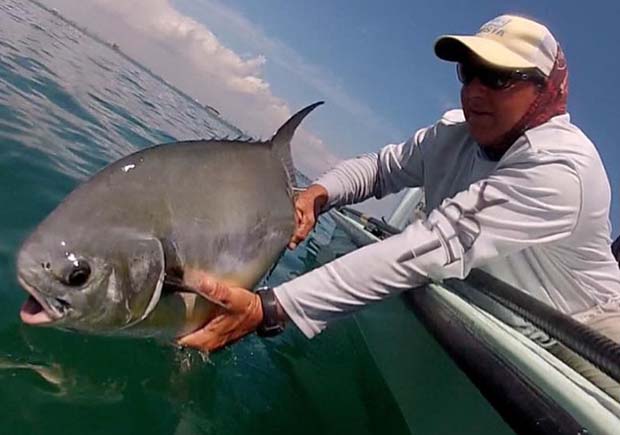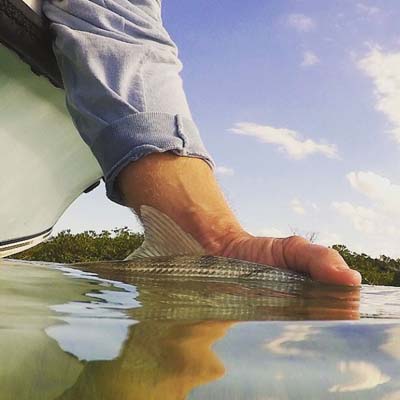Casting in the salt
[dropcap]W[/dropcap]hen fly fishing in the salt, casts of at least 50-feet are essential, and the double-haul needs to be employed to achieve that distance. One must do so accurately and quickly (one or two false casts). If you can cast further, all the better, but it is quick and accurate that will catch fish. In fast, freshwater (river, stream) fish will hold in particular spots that provide both cover and feeding advantages. Ocean fish or flats animals are constantly on the move, they may tail, but not for hours at the same spot. The important thing to remember is that that big brown trout holding 30-feet from you will be there for a long time. You can plan your approach because you have time. Conversely, that school of bonefish presents you with an opportunity that has fleeting written all over it. If you are not ready, can’t hit that guessed convergence point in two false casts at 50-feet – you need to start practicing.
Strip strike
In saltwater, stripping the fly means keeping the rod tip in or near the water. One, it helps the fly swim more naturally and an eat will bring your line taught instantly because there is no slack. If a redfish loses interest in your presentations, it might be the fly, but more probably it was the retrieve, which means change the retrieve pull length and/or speed. Sometimes an erratic retrieve invites an eat.
If you see the fish eat, but you are not tight to it, do not swing the rod up or away on an angle. You will more likely to pull the fly out of its mouth.
If the fish is coming at you and eats, use you off hand to strip as fast as you can to gain tension. Once you are tight to the fish, you can then lift the rod, but not parallel to your body. The rod in that position has hardly any lifting or turning power. Maintaining that profile would prolong the fight and exhaust the fish unnecessarily.
Wind Knots
On the flats in the Florida Keys, Bahamas and much of the Caribbean, winter is windy. In those conditions wind knots are inevitable. If you are fishing a 16-pound tippet and it has a wind knot in it, you are fishing an 8.8-pound tippet (55%). My guide of several years ago, would check my tippet frequently and yes, he found at least one wind knot every day I was there. It blew 25 or more every day,



